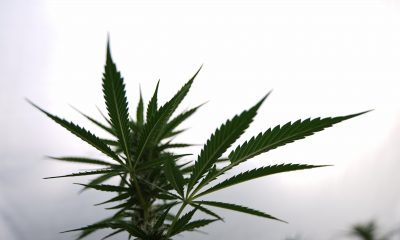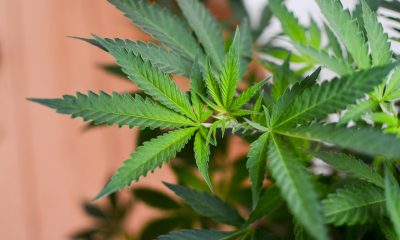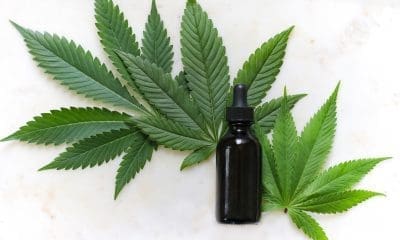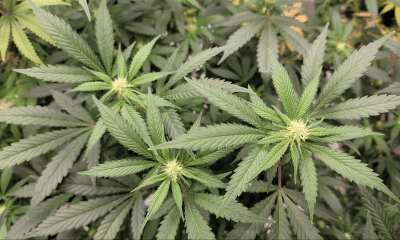Science & Health
Teen Marijuana Use Trends Downward As More States Legalize It For Adults, Federal Survey Finds
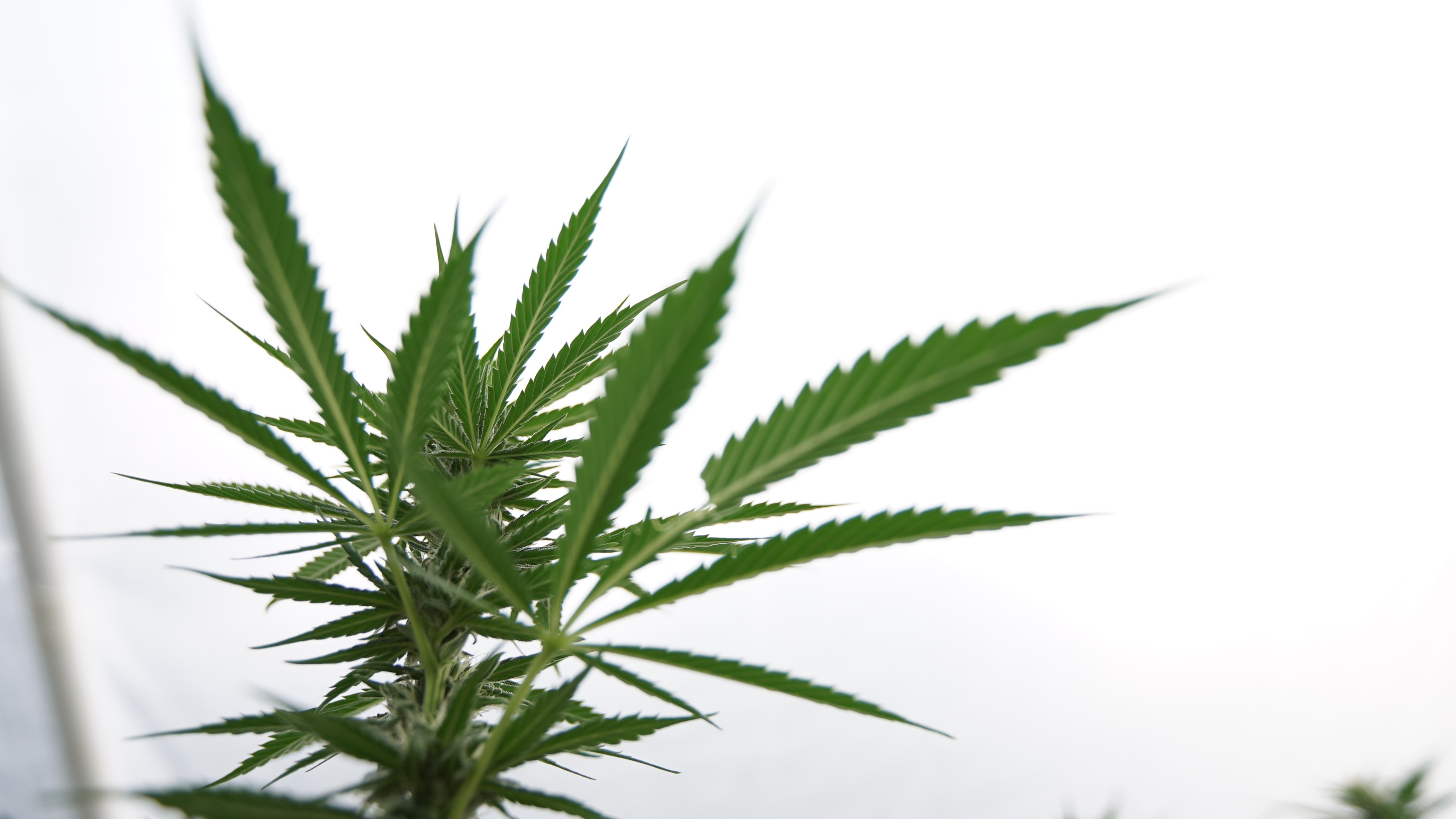
Teen marijuana use declined from 2019 to 2021—and hit a record low since 2011—according to a federal biennial report that was released on Monday. The declines in cannabis consumption by young people come as a growing number of states are legalizing it for adults—contrary to fears long expressed by opponents of the policy change.
The Centers for Disease Control and Prevention’s (CDC) Youth Risk Behavior Survey (YRBS) showed that 16 percent of high school students reported past 30-day cannabis use in 2021, compared to 22 percent in 2019.
JUST RELEASED: The CDC Youth Risk Behavior Survey (YRBS) Data Summary & Trends Report: 2011–2021 is now available. It provides a first look at key #CDCYRBS data and includes a decade of adolescent health trends. Read the report: https://t.co/UV6ypYquex pic.twitter.com/UASFBP38x8
— CDC’s Division of Adolescent and School Health (@CDC_DASH) February 13, 2023
The percentage of students who use marijuana has generally hovered in the low 20s for the past decade, according to the YRBS results. Use of other substances like alcohol and prescription opioids is also trending in the “right direction,” CDC said.
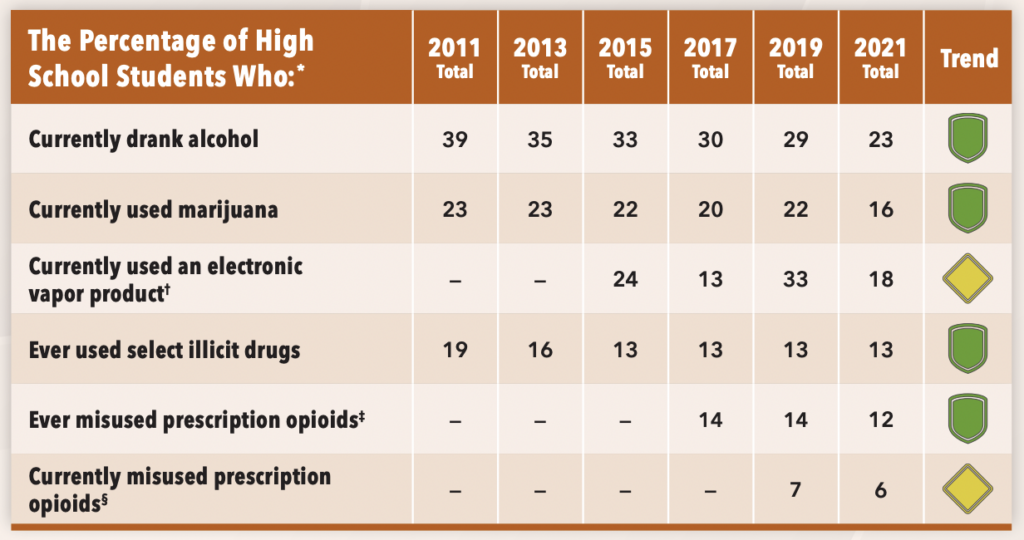
Via CDC.
Interestingly, while overall youth cannabis use has declined, the survey found that “the percentage of female students who currently used marijuana did not change.”
CDC found that 14 percent of male high school students used cannabis in the past 30 days in 2021—down from a high of 26 percent in 2011. For female high school students, that percentage still declined, but less dramatically, from 20 percent to 18 percent during the same timeframe.
The first states started legalizing adult-use marijuana in 2012, with commercial sales beginning in 2014.
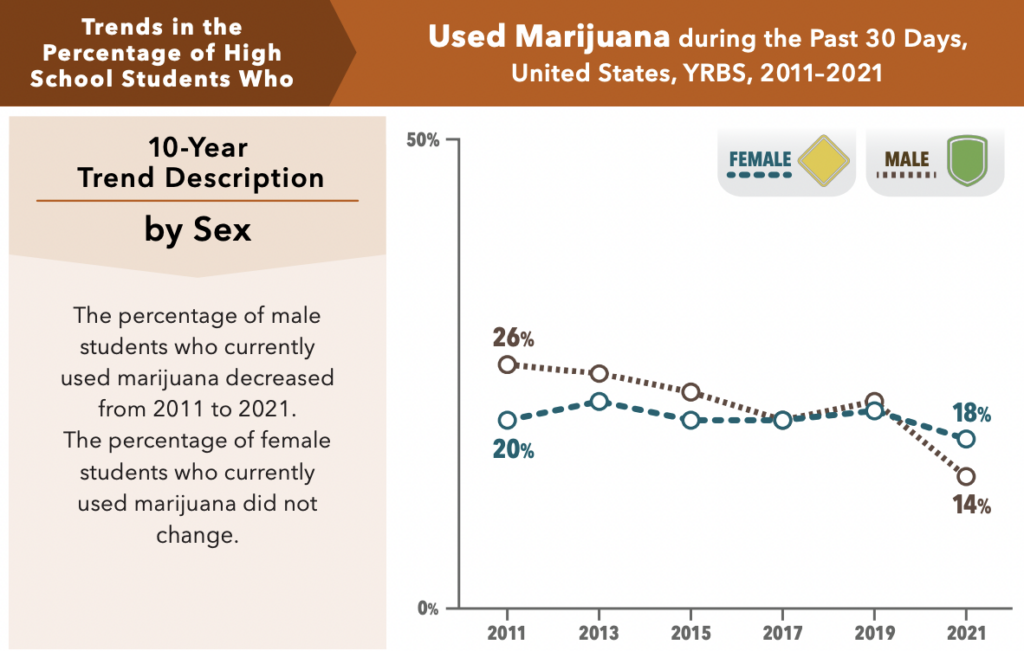
Via CDC.
“Female students were more likely than male students to currently use marijuana. Black students were more likely than Asian, Hispanic, and White students to currently use marijuana,” the agency said. “LGBQ+ students and students with any same-sex partners were more likely than their peers to currently use marijuana.”
Other surveys have identified similar trends in youth cannabis consumption, even as more states move to legalize marijuana.
Advocates have maintained that creating systems where marijuana is regulated and policies like ID verification are enforced would have this effect, though it should be noted that the significant drop in 2021 may be partly attributable to the coronavirus pandemic that socially isolated many students and left them at home with their parents.
That said, the longer-term trend seems to be persisting, with the latest funded Monitoring the Future (MTF) Survey that was released in December showing teen cannabis use remaining stable in 2022 even as many pandemic restrictions were lifted.
But while it might be somewhat surprising that young marijuana use didn’t increase after those were lifted as some expected, the general finding that teen consumption is stable is consistent with a growing body of scientific literature on the topic.
Last year, for example, another National Institute on Drug Abuse- (NIDA) funded study that was published in the American Journal of Preventive Medicine found that state-level cannabis legalization is not associated with increased youth use.
The study demonstrated that “youth who spent more of their adolescence under legalization were no more or less likely to have used cannabis at age 15 years than adolescents who spent little or no time under legalization.”
Yet another federally funded study from Michigan State University researchers that was published in the journal PLOS One last summer found that “cannabis retail sales might be followed by the increased occurrence of cannabis onsets for older adults” in legal states, “but not for underage persons who cannot buy cannabis products in a retail outlet.”
Meanwhile, adolescent marijuana use in Colorado declined significantly in 2021, according to the latest version of a biennial state survey released last year.
A study out of California last year found that “there was 100 percent compliance with the ID policy to keep underage patrons from purchasing marijuana directly from licensed outlets.”
The Coalition for Cannabis Policy, Education, and Regulation (CPEAR), an alcohol and tobacco industry-backed marijuana policy group, also released a report last year analyzing data on youth marijuana use rates amid the state-level legalization movement.
Another federally funded study, the National Survey on Drug Use and Health (NSDUH), was released in October showing that youth marijuana use dropped in 2020 amid the coronavirus pandemic and as more states moved to enact legalization.
Further, an analysis published by the Journal of the American Medical Association in 2021 year found that enacting legalization has an overall impact on adolescent cannabis consumption that is “statistically indistinguishable from zero.”
The U.S. Department of Education’s National Center for Education Statistics also analyzed youth surveys of high school students from 2009 to 2019 and concluded that there’s been “no measurable difference” in the percentage of those in grades 9-12 who reported consuming cannabis at least once in the past 30 days.
There was “no change” in the rate of current cannabis use among high school students from 2009-2019, an earlier CDC survey found. When analyzed using a quadratic change model, however, lifetime marijuana consumption decreased during that period.
Another study released by Colorado officials in 2020 showed that youth cannabis consumption in the state “has not significantly changed since legalization” in 2012, though methods of consumption are diversifying.
Photo courtesy of Chris Wallis // Side Pocket Images.






